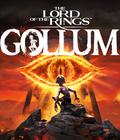When the first trailer for The Lord of the Rings: Gollum was shown, it was tough to tell exactly what kind of game it was going to be. The CGI trailer did little more than set up that the game would be focused on Gollum and fleshing out more of his story. Earlier this month, I had the chance to attend a meeting with some of the developers at Daedalic Entertainment to learn more about the game. While other recent LotR games have leaned into characters who reveled in combat, LotR: Gollum is a more story-driven affair that seems to want to explore the titular character in a way that hasn't yet been done.
The big highlight of the meeting was a 20-minute gameplay demonstration, which started off with Gollum making his way through the craggy landscape of Cirith Ungol, which are a group of mountains on the edge of Mordor. The game's timeline is roughly eight years before the start of the War of the Ring through the point that Gollum was interrogated by Gandalf, who wanted to learn what had happened in Mordor. The gameplay included some areas in Mordor as well as a later section about halfway in the game that was set in Thranduil's Halls in Mirkwood.
Right off the bat, you get the impression that Gollum's nimble ability to climb and move stealthily is a big focus of the game. In the caves of Mordor, the gameplay had Gollum climbing up cliff faces and leaping across gaps as he made his way to his hideout within the mountains. There is a stamina bar that drains any time Gollum doesn't have his feet planted, and it was noted that it is up to the player to plan their routes carefully with this limitation in mind. It was also mentioned that unlike in most other titles, Gollum starts off the game fully capable. At this point in his life, he's been alive for hundreds of years, and while the game may wait to showcase features later, he starts the game just as capable as he ends it.
The game will not be one in which Gollum is suddenly a combat-hungry berserker, but players must use his stealth to account for his relative frailty. In one section, Gollum was able to "stealth kill" an orc, but doing so took several seconds, and his stamina gauge was depleting the whole time. As such, it seems likely that the intention isn't to use Gollum to stealthily wipe out orcs in rapid succession or at least not to defeat one and then somehow fight another. No, in this game, you're more likely to use Gollum's ability to pick up and store rocks to distract enemies or, in one poor orc's example, knock them off-balance and watch them fall into the clutches of a particularly large spider below….
Meanwhile, in the Glittering Grotto, we saw Gollum making use of his swimming skills to make his way to the surface and then to the sparkling walls to begin his ascent. At this point, Gollum has established a telepathic connection with Mell, an Elvish outcast with whom he set up an alliance during an earlier portion of the game. Gollum is seeking an entrance to the palace of Thranduil in search of a magic bell that will free Mell and help Gollum escape. It was shown as an example of a slower-paced climbing section, but in other areas, Gollum will have to climb around while also avoiding enemies.
Many games have the player character talking to themselves, usually for the benefit of the player, but in this game, it is Gollum talking with Smeagol or vice versa. The relationship between this dual (and dueling) personalities was further featured in a later segment that showed Gollum eyeing a beetle that was flying around and landed on a rock nearby. The player was prompted with options that were a more "Smeagol" response (watch the beetle) and more of a "Gollum" response (eat the beetle). If one wasn't picked right away, more of them showed up, and for the Gollum ones, they became increasingly outlandish (such as figuring that the beetle may be a spy).
Picking options for a personality in these segments strengthens that personality, which it was said will affect gameplay and interactions with other characters. However, it isn't a matter of changing the ending; while it may change parts in between, the game is an otherwise linear affair and tells the same overall story. Still, it was one of the most entertaining sections that I saw of the demo, and I'm very curious to see how many of these sections are in the game and how reinforcing one personality versus the other ends up affecting things.
The Lord of the Rings: Gollum seems more story-driven than others in the franchise, possibly due to not relying on combat to carry the experience, but also possibly due to the character being a major one whose story hasn't yet been told. Sure, there are climbing puzzles where you are trying to find a special object, and there are orcs to deal with, but it all seems in service of telling the story. I'm curious to see how this continues to play out in the rest of the game, which is set to come out on Sept. 1, 2022.
More articles about The Lord Of The Rings: Gollum











 The Lord Of The Rings: Gollum is all-new action adventure title that will remain true to the vision laid out in J.R.R Tolkien's The Lord of the Rings and will also explore new events and details related to Gollum's journey.
The Lord Of The Rings: Gollum is all-new action adventure title that will remain true to the vision laid out in J.R.R Tolkien's The Lord of the Rings and will also explore new events and details related to Gollum's journey.

































